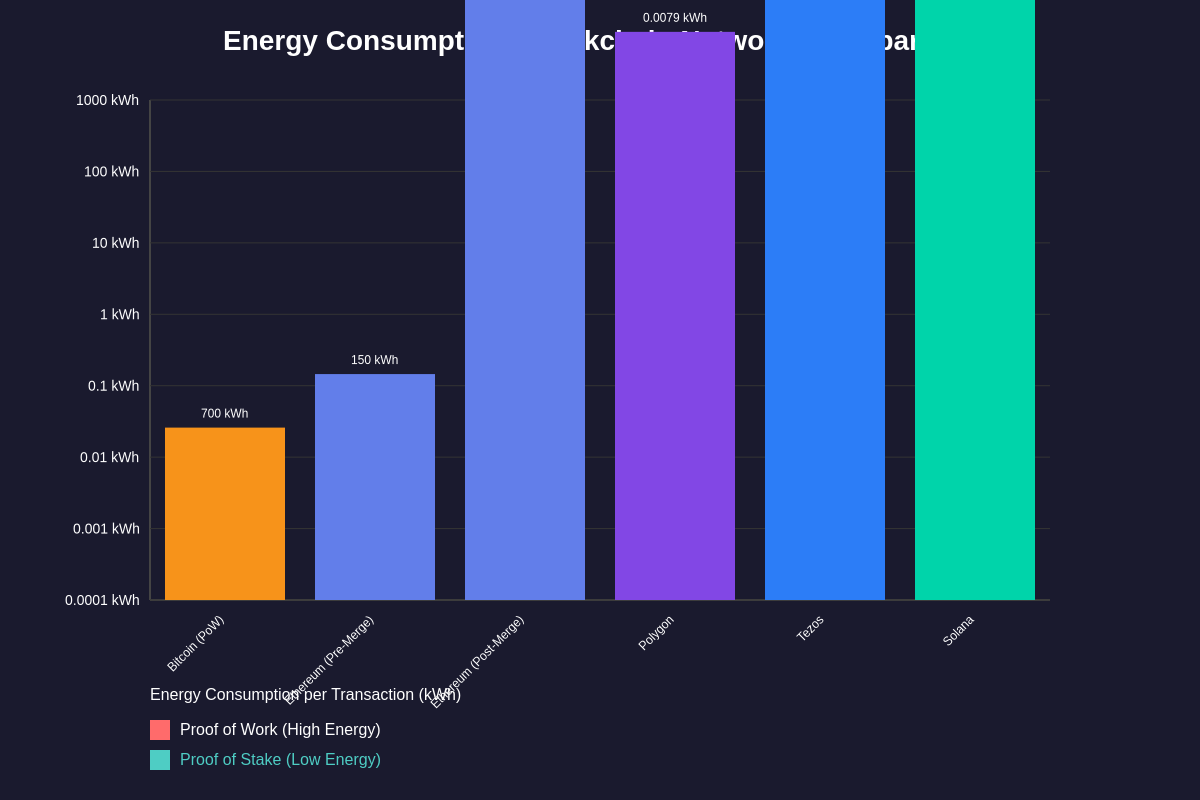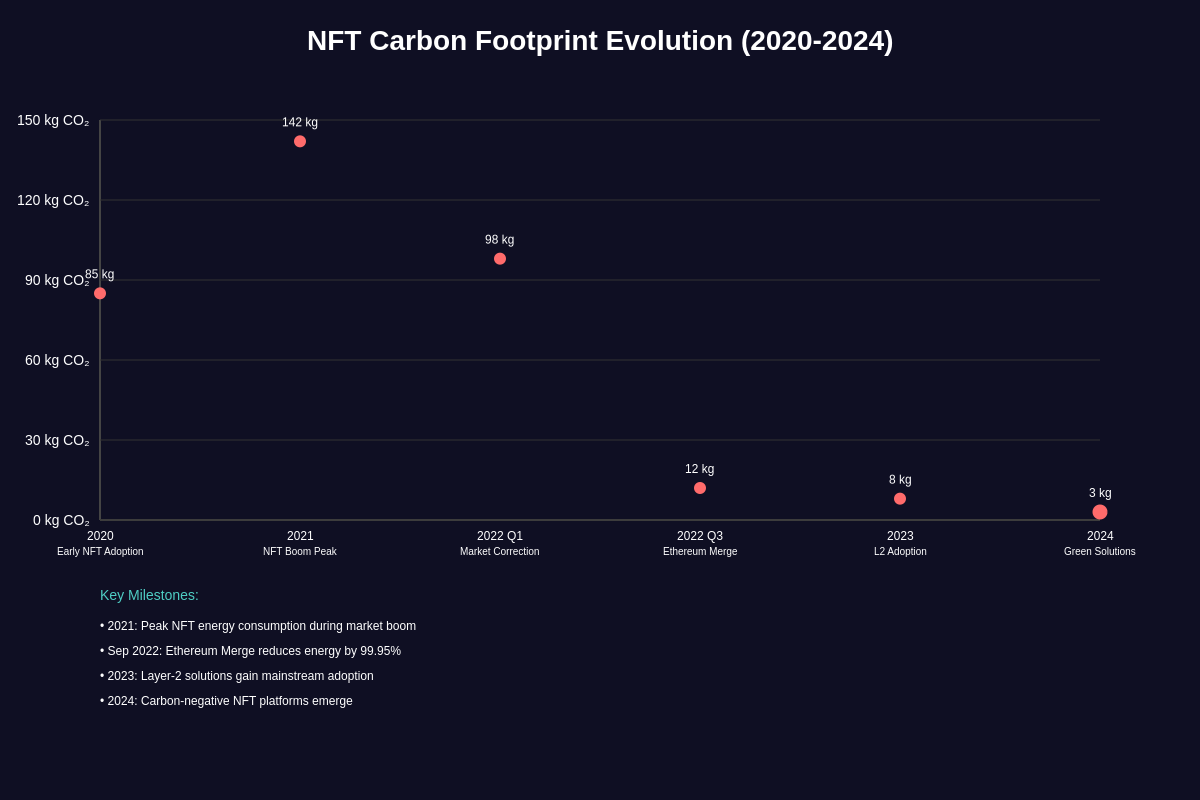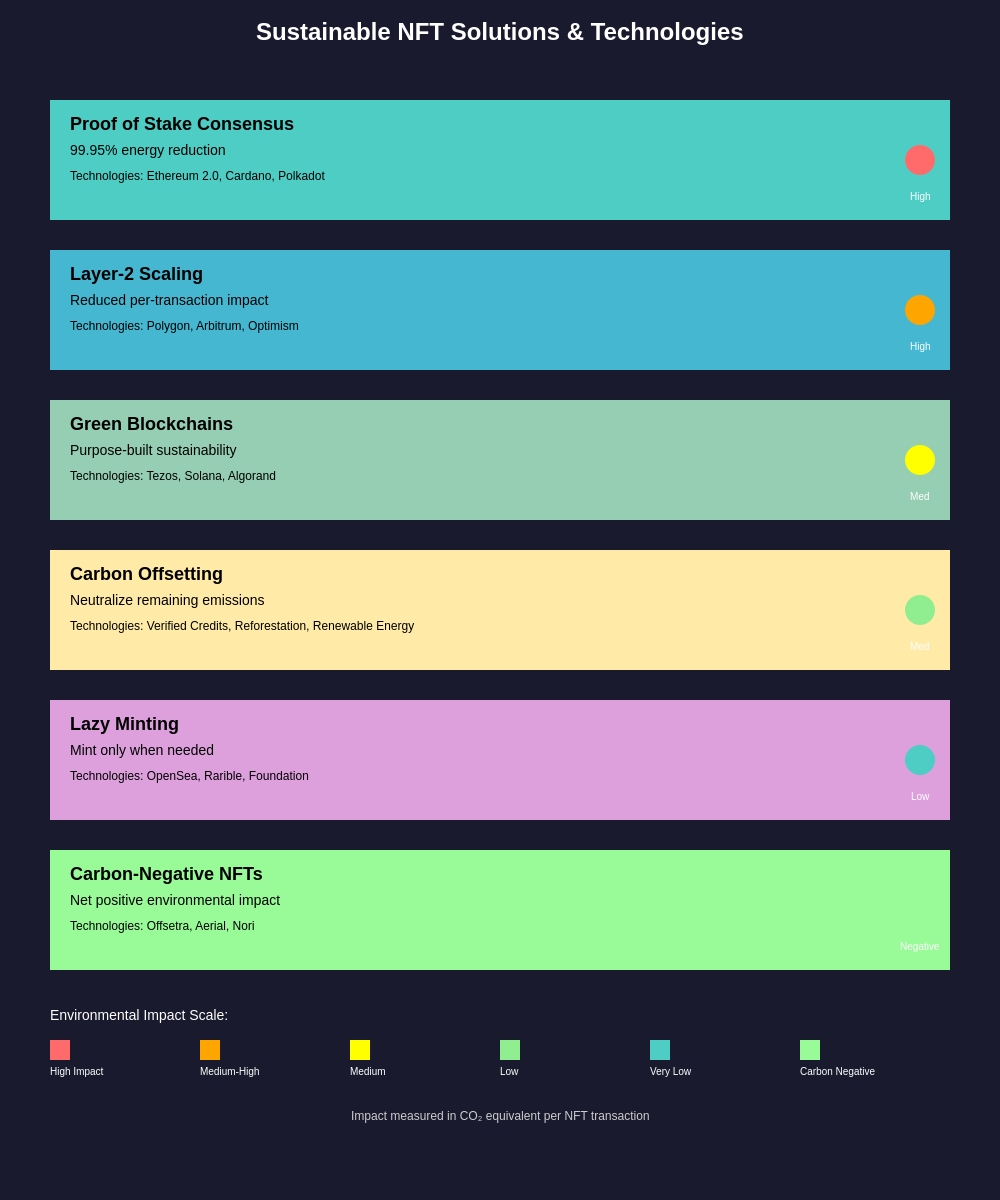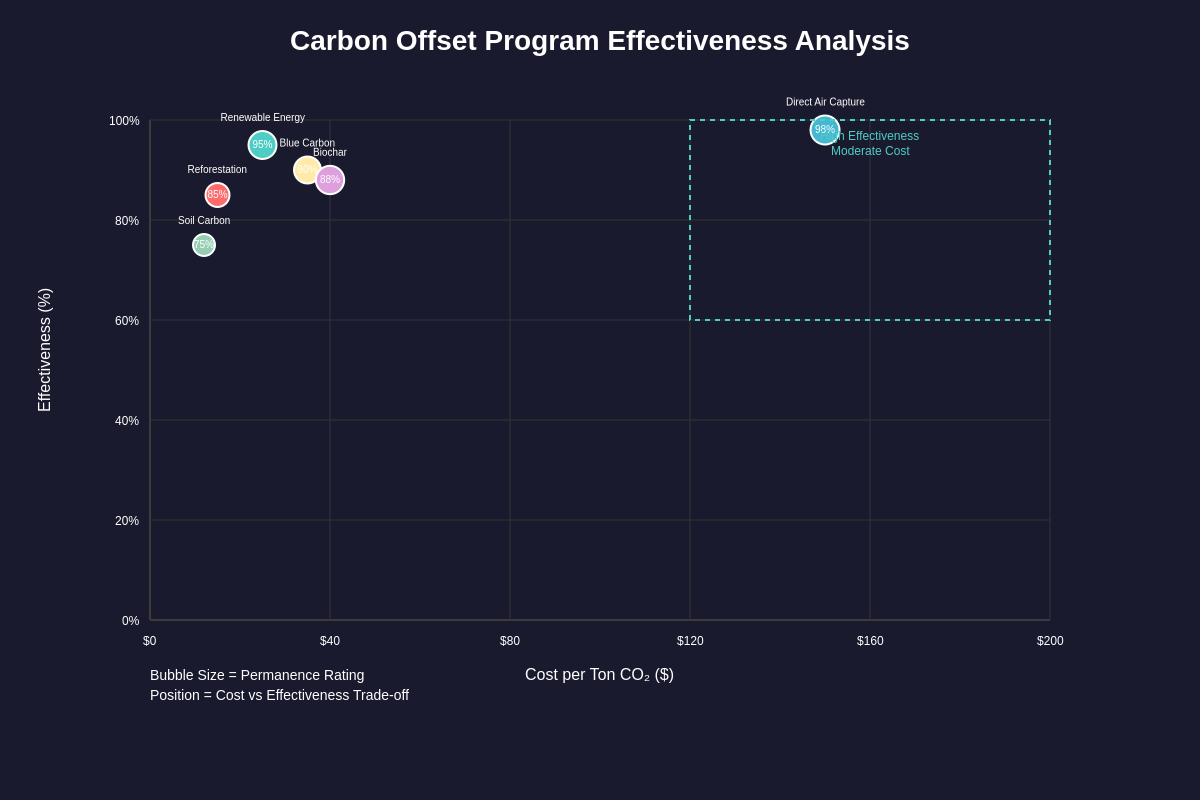Explore advanced trading strategies and technical analysis to understand how environmental concerns affect NFT market dynamics and investment decisions.
The Carbon Footprint Crisis of Digital Art
The emergence of Non-Fungible Tokens as a revolutionary digital art and collectibles market has inadvertently triggered one of the most significant environmental debates in the blockchain space, with early NFT minting operations consuming enormous amounts of energy through proof-of-work consensus mechanisms. The environmental impact of NFT creation and trading has sparked widespread criticism from artists, environmentalists, and technology advocates who argue that the carbon footprint of digital art contradicts the creative community’s traditionally progressive values regarding environmental stewardship and sustainability.
The scale of energy consumption associated with NFT minting became particularly apparent during the 2021 NFT boom, when platforms like OpenSea and SuperRare facilitated millions of transactions on the Ethereum network, each requiring substantial computational power to validate and record on the blockchain. Studies conducted during this period revealed that a single NFT transaction could consume as much energy as an average household uses in several days, prompting urgent calls for more sustainable alternatives and solutions to reduce the environmental impact of digital art creation and trading.
The controversy surrounding NFT environmental impact extends beyond simple energy consumption metrics to encompass broader questions about the relationship between technology innovation and environmental responsibility. Critics argue that the environmental cost of creating digital art through blockchain technology is fundamentally at odds with the creative community’s values, while supporters contend that NFTs represent an important technological advancement that will ultimately benefit artists and creators through improved ownership rights and revenue opportunities.
Understanding Blockchain Energy Consumption Mechanisms
The environmental impact of NFT minting is intrinsically linked to the underlying blockchain consensus mechanisms that secure and validate transactions, with different blockchain networks employing varying approaches that result in dramatically different energy consumption profiles. Proof-of-work consensus mechanisms, as employed by Bitcoin and originally by Ethereum, require miners to solve computationally intensive mathematical problems to validate transactions and create new blocks, consuming substantial amounts of electricity in the process.

The energy consumption associated with proof-of-work systems stems from the competitive nature of mining operations, where thousands of miners worldwide compete to solve cryptographic puzzles using specialized hardware that operates continuously at high power consumption levels. This competition ensures network security and decentralization but creates an inherent energy consumption floor that increases with network value and adoption, making proof-of-work systems increasingly energy-intensive as they grow.
Ethereum’s original proof-of-work consensus mechanism, which powered the majority of early NFT minting activities, required approximately 150 kilowatt-hours of energy per transaction according to various analytical studies tracked on trading platforms, though this figure varied significantly based on network congestion and transaction complexity. The environmental impact calculations became even more complex when considering the indirect effects of network usage, including the energy consumed by validators, node operators, and the broader infrastructure supporting blockchain operations.
The geographic distribution of mining operations significantly affects the environmental impact of blockchain networks, with mining concentrated in regions with cheap electricity often derived from fossil fuel sources. China’s dominance in Bitcoin mining, prior to regulatory restrictions, meant that much of the energy consumed by proof-of-work networks came from coal-powered electricity generation, amplifying the carbon footprint of blockchain transactions including NFT minting operations.
Proof-of-Stake and Energy-Efficient Alternatives
The transition from energy-intensive proof-of-work to more sustainable proof-of-stake consensus mechanisms represents one of the most significant developments in addressing blockchain environmental concerns, with Ethereum’s successful merge to proof-of-stake in September 2022 reducing the network’s energy consumption by over 99%. Proof-of-stake systems replace energy-intensive mining operations with validator nodes that are selected to create new blocks based on their stake in the network, eliminating the competitive computational processes that drive high energy consumption in proof-of-work systems.

The environmental benefits of proof-of-stake extend beyond simple energy reduction to include more predictable and manageable energy consumption patterns that can be optimized for renewable energy sources. Validators in proof-of-stake networks can operate using standard computer hardware with minimal energy requirements, making it feasible to power validation operations entirely through solar, wind, or other renewable energy sources without the massive infrastructure investments required for competitive mining operations.
Alternative blockchain networks specifically designed for NFT creation and trading have emerged with environmental sustainability as a core design principle, offering artists and creators options that minimize carbon footprint while maintaining the functional benefits of blockchain-based digital ownership. Networks like Tezos, Solana, and Polygon have gained popularity among environmentally conscious creators due to their low energy consumption profiles and competitive transaction costs, demonstrating that environmental sustainability and blockchain functionality are not mutually exclusive.
Layer-2 scaling solutions built on top of existing blockchain networks offer another approach to reducing the environmental impact of NFT operations by aggregating multiple transactions into single on-chain submissions, effectively distributing the energy cost of blockchain consensus across numerous user operations. These solutions, including Polygon, Arbitrum, and Optimism, can reduce the per-transaction energy consumption of NFT minting and trading by orders of magnitude while maintaining compatibility with existing blockchain infrastructure and tooling.
Carbon Offset Programs and Green NFT Initiatives
The development of carbon offset programs specifically designed for NFT and blockchain operations represents an important intermediate solution for addressing environmental concerns while the underlying technology transitions to more sustainable consensus mechanisms. These programs calculate the estimated carbon footprint of NFT transactions and purchase verified carbon credits to offset the environmental impact, though the effectiveness and legitimacy of different offset programs varies significantly based on their methodology and the quality of underlying carbon credits.
Leading NFT platforms have implemented various green initiatives designed to reduce or offset the environmental impact of their operations, including partnerships with renewable energy projects, investment in carbon offset programs, and migration to more energy-efficient blockchain networks. OpenSea’s commitment to transitioning to proof-of-stake Ethereum and supporting eco-friendly blockchains demonstrates how major platforms are responding to environmental concerns while maintaining their market positions and user bases.
The emergence of specialized green NFT platforms that exclusively operate on energy-efficient blockchain networks has created new opportunities for environmentally conscious artists and collectors to participate in digital art markets without the environmental guilt associated with high-energy blockchain operations. Platforms like Hic et Nunc on Tezos and others focused on sustainability have attracted artists specifically seeking environmentally responsible ways to create and sell digital art through blockchain technology.
Carbon-negative NFT projects represent an innovative approach to environmental responsibility that goes beyond simply minimizing impact to actively contributing to environmental restoration and carbon sequestration efforts. These projects incorporate carbon removal or environmental restoration activities into their core value proposition, using NFT sales to fund reforestation, carbon capture technology, or other environmental initiatives that result in net positive environmental impact.
Corporate responsibility initiatives from major technology companies involved in NFT infrastructure have led to significant investments in renewable energy and carbon neutrality commitments that indirectly benefit the environmental profile of NFT operations. Microsoft’s carbon-negative commitment, Google’s renewable energy investments, and similar initiatives from cloud computing providers that support blockchain infrastructure contribute to reducing the overall environmental impact of NFT platforms and applications.
Technical Solutions and Optimization Strategies
Advanced technical optimization strategies for NFT platforms can significantly reduce the computational and energy requirements associated with digital art creation and trade without compromising functionality or user experience. These optimizations include efficient smart contract design, batch processing of transactions, and algorithmic improvements that reduce the computational complexity of NFT operations while maintaining security and decentralization properties.

Smart contract optimization techniques specifically designed for NFT applications can reduce gas consumption and associated energy usage through more efficient code architecture, reduced storage requirements, and optimized transaction processing logic. These improvements benefit both users through lower transaction costs and the environment through reduced energy consumption per NFT operation, demonstrating how technical excellence and environmental responsibility can align in blockchain development.
The implementation of lazy minting techniques, where NFTs are not actually minted on the blockchain until they are sold or transferred, represents a significant advancement in reducing the environmental impact of NFT creation by eliminating the energy consumption associated with speculative minting of digital art that may never be traded. This approach reduces the upfront environmental cost of NFT creation while maintaining all the functional benefits of blockchain-based digital ownership and provenance tracking.
InterPlanetary File System and other decentralized storage solutions offer alternatives to storing NFT metadata and assets directly on energy-intensive blockchains, reducing the storage burden on blockchain networks while maintaining decentralization and permanence guarantees. These hybrid approaches combine the security and ownership benefits of blockchain technology with more energy-efficient storage solutions for the actual digital art and metadata associated with NFTs.
Advanced trading analytics show how technical optimizations impact transaction costs and energy consumption across different blockchain networks, providing valuable data for artists and platforms seeking to minimize their environmental impact while maintaining competitive functionality and user experience in the NFT marketplace.
Blockchain Network Comparisons and Migration Strategies
Comprehensive analysis of different blockchain networks reveals dramatic variations in energy consumption per NFT transaction, with some networks consuming thousands of times more energy than others while providing similar functionality for digital art creation and trading. Ethereum’s post-merge proof-of-stake implementation consumes approximately 0.0026 kWh per transaction compared to its previous proof-of-work consumption of over 150 kWh, illustrating the transformative potential of consensus mechanism improvements for environmental sustainability.
Migration strategies for existing NFT projects seeking to reduce their environmental impact must balance technical feasibility, user experience, and market considerations while achieving meaningful reductions in energy consumption and carbon footprint. Cross-chain bridging technologies enable NFT projects to migrate to more energy-efficient networks while maintaining compatibility with existing user bases and marketplace infrastructure, though these migrations require careful planning and execution to avoid technical issues or user confusion.
The comparative analysis of alternative blockchain networks specifically designed for NFT applications reveals significant differences in energy consumption, transaction costs, security properties, and ecosystem development, providing artists and platforms with detailed information needed to make informed decisions about environmental impact versus functionality trade-offs. Networks like Tezos consume approximately 0.00006 kWh per transaction, while maintaining robust security and supporting sophisticated NFT applications and marketplace functionality.
Market dynamics and user adoption patterns significantly influence the environmental impact of NFT migration strategies, as networks with limited user adoption may offer excellent environmental profiles but lack the liquidity and market access that artists and collectors require for successful NFT projects. Balancing environmental responsibility with commercial viability requires careful analysis of network characteristics, user behavior, and long-term sustainability trends in the NFT marketplace.
The development of cross-chain compatibility standards and protocols enables NFT projects to operate across multiple blockchain networks simultaneously, allowing creators to offer their work on both high-adoption networks with larger markets and environmentally sustainable networks that align with their values. These multi-chain strategies can maximize both environmental responsibility and commercial success for NFT creators and platforms.
Industry Standards and Environmental Certifications
The emergence of industry standards and certification programs specifically designed to measure and verify the environmental impact of NFT platforms and projects provides creators and collectors with reliable information needed to make environmentally responsible decisions in the digital art marketplace. Organizations like the Crypto Climate Accord and similar initiatives are developing standardized methodologies for measuring blockchain energy consumption and carbon footprint that enable meaningful comparisons between different NFT platforms and approaches.
Environmental certification programs for NFT platforms and projects provide third-party verification of environmental claims and carbon offset activities, helping to address concerns about greenwashing and ensuring that environmental initiatives deliver genuine environmental benefits. These certification programs typically include rigorous auditing processes, ongoing monitoring requirements, and transparent reporting standards that enable users to make informed decisions about the environmental impact of their NFT activities.
The development of standardized environmental impact reporting for blockchain networks and NFT platforms enables more accurate comparison of different options and tracking of improvement over time, supporting market-driven incentives for environmental responsibility in the digital art space. Standardized metrics include energy consumption per transaction, carbon intensity of energy sources, and effectiveness of offset programs, providing comprehensive environmental profiles for different NFT platforms and blockchain networks.
Collaborative industry initiatives aimed at reducing the environmental impact of NFTs include shared research projects, technology development consortiums, and coordinated advocacy efforts that leverage the collective resources and expertise of multiple organizations to accelerate the development and adoption of environmentally sustainable NFT technologies. These initiatives demonstrate how competition and collaboration can coexist in driving environmental innovation in the blockchain space.
The integration of environmental impact considerations into NFT marketplace user interfaces and decision-making tools enables creators and collectors to easily understand and minimize the environmental consequences of their activities, supporting more environmentally responsible behavior through improved information and user experience design. Features like carbon footprint calculators, environmental impact comparisons, and automated offset purchasing make environmental responsibility more accessible and actionable for NFT market participants.
Economic Incentives for Sustainable NFT Practices
Market mechanisms and economic incentives that reward environmentally sustainable NFT practices are emerging as powerful drivers of technological improvement and behavioral change in the digital art space, with environmentally conscious collectors increasingly preferring NFTs created and traded on sustainable blockchain networks. Price premiums for green NFTs and reduced transaction costs on energy-efficient networks create direct financial incentives for artists and platforms to adopt more sustainable practices and technologies.

The development of carbon credit integration systems that automatically offset the environmental impact of NFT transactions represents an innovative approach to internalizing environmental costs while maintaining user convenience and platform functionality. These systems can calculate real-time carbon footprints and automatically purchase verified carbon offsets, making environmental responsibility seamless and transparent for NFT creators and collectors who want to minimize their impact.
Investment patterns and venture capital funding increasingly favor NFT platforms and projects that demonstrate strong environmental credentials and sustainable technology choices, creating capital market incentives for environmental innovation in the blockchain space. Major investors are incorporating environmental, social, and governance criteria into their blockchain investment decisions, directing funding toward platforms and projects that align with sustainability goals and environmental responsibility commitments.
Government incentives and regulatory frameworks that promote sustainable blockchain technologies and penalize high-energy consumption systems are beginning to influence NFT platform development and adoption patterns, particularly in jurisdictions with strong environmental policy frameworks. Carbon taxation, renewable energy incentives, and environmental disclosure requirements create regulatory pressures that complement market-driven incentives for sustainable NFT practices and technologies.
The emergence of environmental impact as a significant factor in NFT valuation and market dynamics demonstrates how sustainability considerations are becoming integrated into the core economic structure of digital art markets, rather than remaining peripheral concerns addressed only by environmentally motivated participants. This integration suggests that environmental sustainability will become increasingly important for commercial success in NFT markets rather than representing a trade-off between profitability and environmental responsibility.
Future Technologies and Innovation Pathways
Emerging technologies and research directions that promise further reductions in the environmental impact of NFT creation and trading include advanced consensus mechanisms, quantum-resistant cryptographic systems, and novel blockchain architectures designed specifically for sustainability and efficiency. These technologies represent the next generation of improvements beyond current proof-of-stake implementations and layer-2 scaling solutions, potentially achieving even greater environmental benefits while maintaining or improving security and functionality.
The development of carbon-negative blockchain networks that actively remove carbon from the atmosphere through their normal operations represents a transformative approach to blockchain environmental impact that could make NFT creation and trading environmentally beneficial rather than simply neutral. These systems integrate carbon capture and storage technologies into blockchain consensus mechanisms or dedicate transaction fees to verified carbon removal projects, creating positive environmental impact from digital art activities.
Artificial intelligence and machine learning technologies applied to blockchain optimization can identify and implement efficiency improvements that reduce energy consumption while maintaining network security and performance, representing a promising avenue for continued environmental improvement in NFT platforms and blockchain networks. These AI-driven optimizations can adapt to changing network conditions and user behavior patterns to maintain optimal efficiency under varying operational conditions.
Market analysis platforms increasingly incorporate environmental impact metrics and sustainability indicators into cryptocurrency and NFT market data, enabling traders and investors to make environmentally informed decisions and supporting market mechanisms that reward sustainable practices through improved price discovery and transparency.
The integration of renewable energy certificates and blockchain-based energy trading systems with NFT platforms creates opportunities for NFT transactions to directly support renewable energy development and consumption, establishing positive feedback loops between digital art markets and clean energy infrastructure. These systems can ensure that NFT platforms operate exclusively on renewable energy while supporting the growth of sustainable energy systems through increased demand and investment.
Regulatory Landscape and Policy Implications
Government regulatory approaches to blockchain environmental impact are increasingly influencing NFT platform development and operation strategies, with jurisdictions implementing various policy tools including carbon taxation, energy efficiency standards, and environmental disclosure requirements that directly affect the economics and viability of different NFT technologies and business models. The European Union’s proposed regulations on cryptocurrency environmental impact and the United States’ consideration of similar measures demonstrate how regulatory frameworks are evolving to address environmental concerns in the blockchain space.
International climate policy frameworks and carbon accounting standards are beginning to incorporate blockchain technology considerations, creating global policy pressures for sustainable NFT practices and technologies that extend beyond individual jurisdictions to influence international trade and cooperation in digital art markets. The integration of blockchain environmental impact into United Nations climate frameworks and international environmental agreements suggests that NFT environmental responsibility will become increasingly important for global market access and regulatory compliance.
The development of environmental impact assessment requirements for large-scale NFT platforms and blockchain networks creates regulatory incentives for environmental improvement while providing policymakers and the public with better information about the environmental consequences of digital art market growth. These assessment requirements typically include energy consumption monitoring, carbon footprint calculation, and environmental improvement planning that must be regularly updated and publicly reported.
Policy frameworks that specifically support the development and adoption of sustainable blockchain technologies, including research funding, tax incentives, and regulatory sandboxes for environmental innovation, create positive policy environments for continued improvement in NFT environmental performance. These supportive policies complement regulatory restrictions on high-impact technologies by providing clear pathways for compliance and improvement rather than simply penalizing existing practices.
The integration of environmental considerations into intellectual property and digital rights frameworks that govern NFT creation and trading demonstrates how environmental policy is becoming embedded in the broader legal and regulatory structure surrounding digital art markets. These integrated approaches recognize that environmental sustainability and creative rights protection are complementary rather than competing policy objectives in the digital art space.
Community Response and Cultural Shifts
The environmental debate surrounding NFTs has catalyzed significant cultural shifts within the digital art community, with many artists, collectors, and platforms actively seeking environmentally responsible alternatives and advocating for sustainable practices in blockchain-based creative markets. This cultural movement extends beyond simple technology adoption to encompass broader questions about the relationship between artistic expression, technological innovation, and environmental stewardship in the digital age.
Artist-led initiatives promoting sustainable NFT practices have emerged as powerful forces for change in the digital art space, with influential creators using their platforms and market influence to advocate for environmental responsibility and support sustainable NFT platforms and technologies. These initiatives include collaborative projects that demonstrate sustainable NFT creation, educational campaigns about environmental impact, and coordinated efforts to migrate existing projects to more sustainable blockchain networks.
The development of environmental activism within NFT communities has created new forms of digital art that explicitly address climate change and environmental issues while demonstrating sustainable creation and distribution practices, combining artistic expression with environmental advocacy in ways that leverage the unique properties of blockchain technology for positive environmental impact. These projects often incorporate carbon removal activities, environmental monitoring, or conservation funding into their core artistic and commercial structure.
Educational initiatives aimed at improving environmental literacy within NFT communities have proven effective at driving behavioral change and technology adoption among creators and collectors who want to participate in digital art markets while minimizing their environmental impact. These educational programs cover topics including blockchain energy consumption, carbon footprint calculation, sustainable platform selection, and effective offset purchasing, providing practical guidance for environmentally responsible NFT participation.
The emergence of environmental impact as a significant factor in NFT community formation and social dynamics demonstrates how sustainability considerations are becoming integrated into the cultural fabric of digital art markets rather than remaining technical concerns addressed only by specialists. Environmental values increasingly influence which platforms gain adoption, which artists achieve success, and how collectors make purchasing decisions in NFT markets.
Measuring and Monitoring Environmental Progress
Standardized methodologies for measuring the environmental impact of NFT creation and trading have evolved significantly since the early days of digital art blockchain adoption, providing more accurate and comprehensive assessments of energy consumption, carbon footprint, and environmental improvement over time. These methodologies incorporate life-cycle analysis approaches that consider the full environmental impact of NFT systems including hardware manufacturing, network operations, and end-of-life disposal rather than focusing exclusively on direct energy consumption during transaction processing.
Real-time monitoring systems that track the environmental performance of NFT platforms and blockchain networks enable continuous assessment and improvement of environmental impact while providing transparency and accountability for environmental claims and commitments. These monitoring systems typically include automated data collection, standardized reporting formats, and public dashboards that make environmental performance information easily accessible to users and stakeholders.
The development of environmental impact benchmarking standards for NFT platforms enables meaningful comparison of different options and tracking of industry-wide progress toward sustainability goals, supporting market mechanisms that reward environmental leadership and penalize poor environmental performance. Benchmarking standards typically include metrics for energy consumption per transaction, carbon intensity, renewable energy usage, and effectiveness of environmental improvement initiatives.
Third-party auditing and verification systems for NFT platform environmental claims provide independent assessment of environmental performance and improvement claims, addressing concerns about greenwashing and ensuring that environmental initiatives deliver genuine benefits rather than simply marketing advantages. These auditing systems typically include technical assessments, financial analysis of offset programs, and ongoing monitoring of environmental performance against stated commitments.
The integration of environmental impact data into NFT marketplace interfaces and decision-making tools enables users to easily understand and compare the environmental consequences of different choices, supporting more environmentally responsible behavior through improved information availability and user experience design. Features like environmental impact ratings, carbon footprint calculators, and sustainability filters make environmental considerations accessible and actionable for creators and collectors who want to minimize their impact.
Disclaimer: This article is for informational purposes only and does not constitute financial advice. Cryptocurrency and NFT investments carry significant risks, including the potential loss of principal. Environmental impact assessments and sustainability claims should be independently verified. Always conduct your own research and consult with qualified professionals before making investment decisions. Past performance does not guarantee future results, and regulatory landscapes continue to evolve.